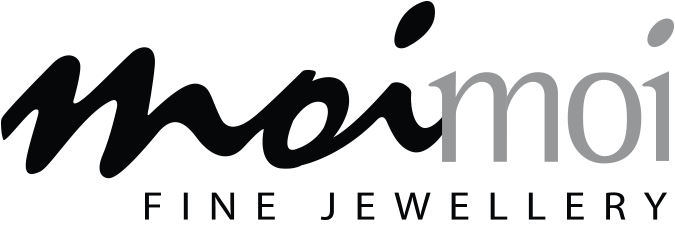Learn About Diamonds
Everything you need to know about Diamonds
THE FOUR C’S
The Four C’s are: Carat, Colour, Clarity and Cut.
These are the four value factors that professionals use to grade, compare and value diamonds. This grading system was developed by the GIA in the 1940’s and universally used by all respected jewellers to provide objective standards in the evaluation of a diamond.
Carat is the unit measurement of diamond weight. One carat is equivalent to 0.2 grams and is sometimes referred to as 100 points. Diamonds weighing less than 1 carat are expressed as points; for example, a 0.50 carat diamond is referred to as a ‘50 pointer’. Diamond weights greater than 1 carat are usually expressed in carats and decimals. For example, a 1.45 carat diamond is expressed as ‘one point four five carats’. Diamonds of the same carat weight can have very different values depending on the other value factors of cut, colour and clarity.
What carat size should I buy?
Carat size comes down to personal preference and budget. While some diamond shoppers prefer the look and fit of a smaller diamond, many seek to buy the largest diamond within their budget. There can be a significant price difference for slightly different carat sizes, however as carat refers to weight, this does not always translate to a significant visual difference. For example, comparing the size of a 1.00ct diamond with a 0.90ct diamond may not yield an obvious visual difference, however the price difference may be enough to bring this diamond within budget.
Two 1.00ct diamonds can look quite different depending on other factors such as Cut, Colour and Clarity. Therefore, it is important to consider all aspects of the 4C’s to ensure you are choosing the best diamond for you.
The ‘colour’ of diamonds actually refers to the lack of colour present in a diamond. Diamonds are graded on a scale from D (colourless), and continues with increasing presence of colour to Z (light colour).
DEF Colourless
GHIJ Near Colourless
KLM Faint Yellow
NOPQR Very Light Yellow
STUVWXYZ Light Yellow
Colour is subjective and it’s very important to consider other factors, particularly the cut of a diamond.
FANCY COLOUR DIAMONDS
Colourless diamonds are by far the most popular, however diamonds are available in many different colours including pink, blue, yellow and green. These colours are called ‘fancy colour diamonds’ and are often valued at a higher price point than a white diamond. Unlike white diamonds, fancy colour diamonds are valued more for their colour intensity rather than their brilliance.
The GIA grading system for fancy colour diamonds was created to accommodate the fact that not all coloured diamonds have a same depth of colour. Yellow diamonds can be found in a range of saturations while blue diamonds are not. Deep, intense shades are valued more highly than pale shades.
Fancy Light
Fancy
Fancy Intense
Fancy Vivid
Diamond clarity refers to the absence of internal inclusions and external blemishes.
Most diamonds contain some form of these characteristics and the number, size, nature and position of these characteristics will affect the value of a diamond.
The clarity of diamonds is graded as:
FL
Flawless
No inclusions and no blemishes visible to a skilled grader using 10x magnification.
IF
Internally flawless
No inclusions and only blemishes are visible to a skilled grader using 10x magnification
VVS1 and VVS2
Very very slightly included
Minute inclusions that range from extremely difficult to very difficult to see are visible to a skilled grader using 10x magnification.
VS1 and VS2
Very slightly included
Minor inclusions that range from difficult to somewhat easy to see are visible to a skilled grader using 10x magnification.
SI1 and SI2
Slightly included
Noticeable inclusions that range from easy to very easy to see are visible to a skilled grader using 10x magnification
I1, I2 and I3
Included
Obvious inclusions are visible to a skilled grader using 10x magnification and may affect transparency and brilliance.
What clarity of diamond should I buy?
Flawless diamonds are the rarest and therefore the most expensive, however a diamond does not need to be flawless to have a stunning sparkle. If the cut of the diamond is excellent, a diamond of SI1 and SI2 clarity can be an excellent choice for value and appearance. These grades are eye-clean, which means the inclusions cannot be seen with the human eye. Avoid I1, I2 and I3 clarity grades for fine jewellery as these grades have inclusions that would affect the brilliance and durability of the diamond.
A diamond’s cut refers to how well a diamond’s facets interacts with light to create brilliance, fire and scintillation. Cut directly affects a diamonds beauty, which is why most jewellers say it the most important factor of The Four C’s.
Diamonds that are cut too deep or too shallow lose light that spills through the side or bottom. As a result, poorly cut diamonds are less brilliant and certainly less valuable. A diamond that is cut to good proportions reflects light internally from one facet to another and then disperses back through the top of the stone.
The cut scale as determined by the GIA is Excellent, Very Good, Good, Fair and Poor.
What Cut Quality of a Diamond Should I Buy?
For fine jewellery, it is recommended to choose the best cut within your budget as a higher cut will often allow you to maintain a diamond’s beauty, even when going with a lower colour or clarity. Very Good or Excellent cuts are good choices as brilliance is the first thing people notice.
 Track Your Order
Track Your Order


